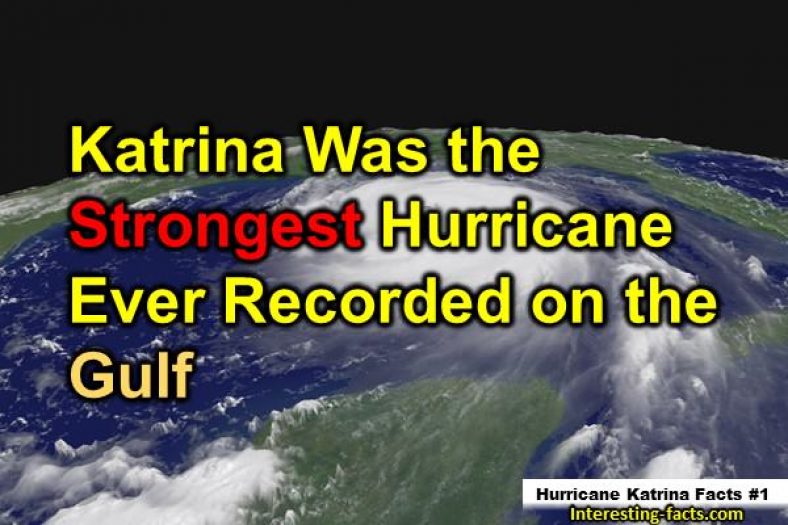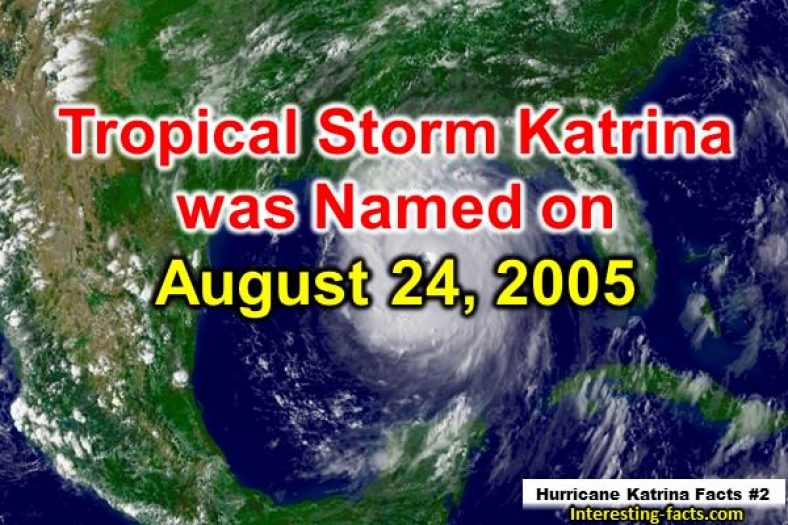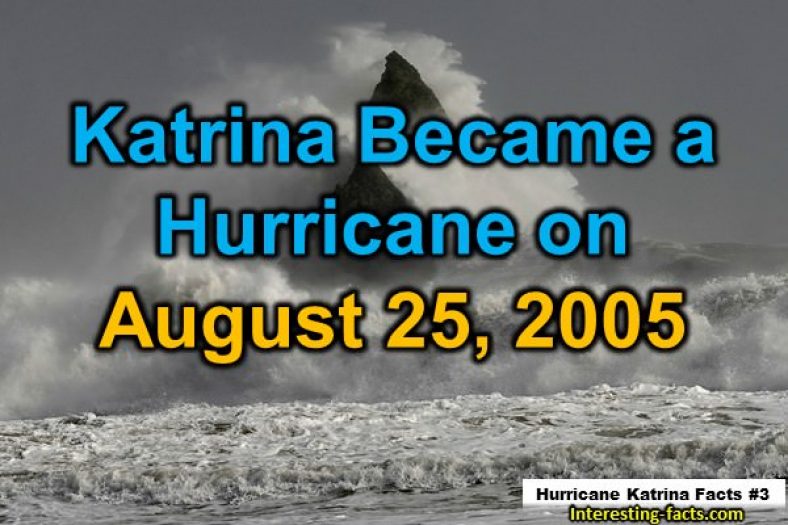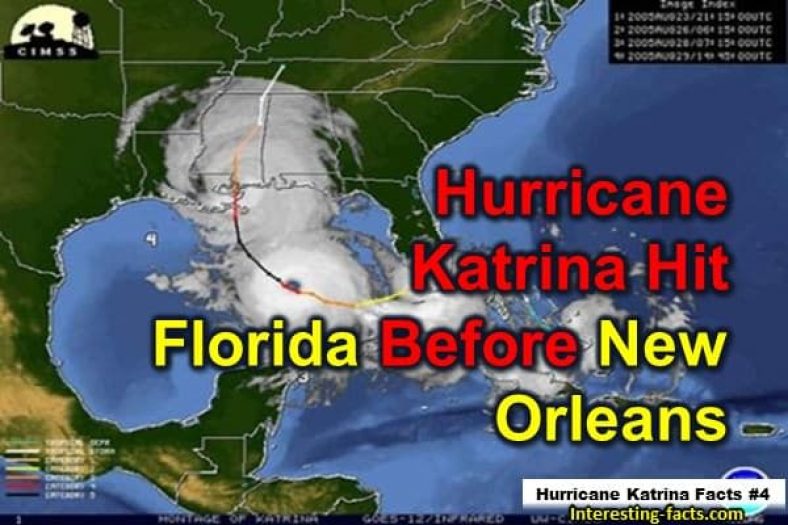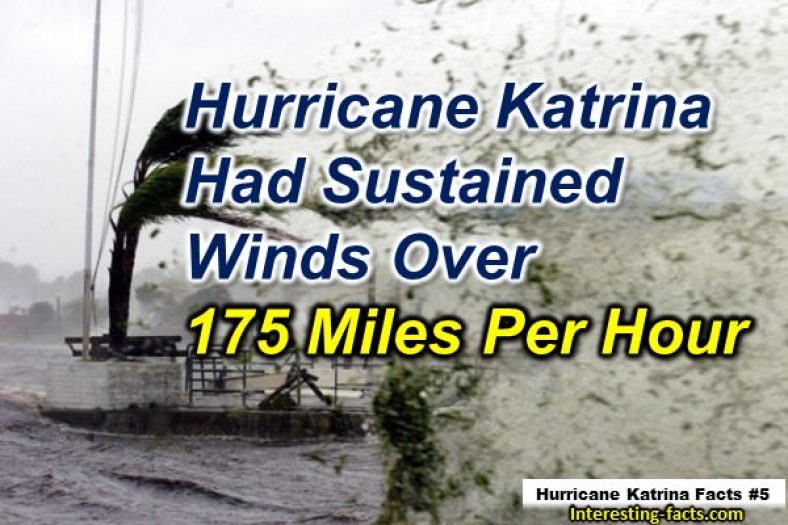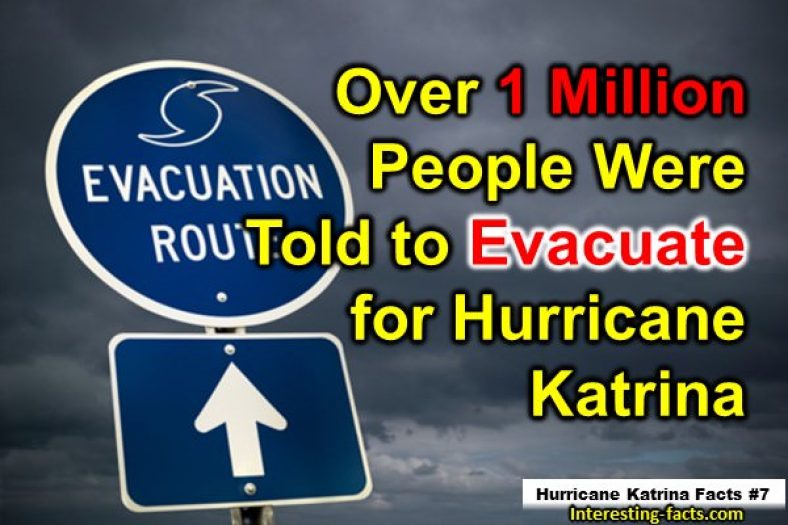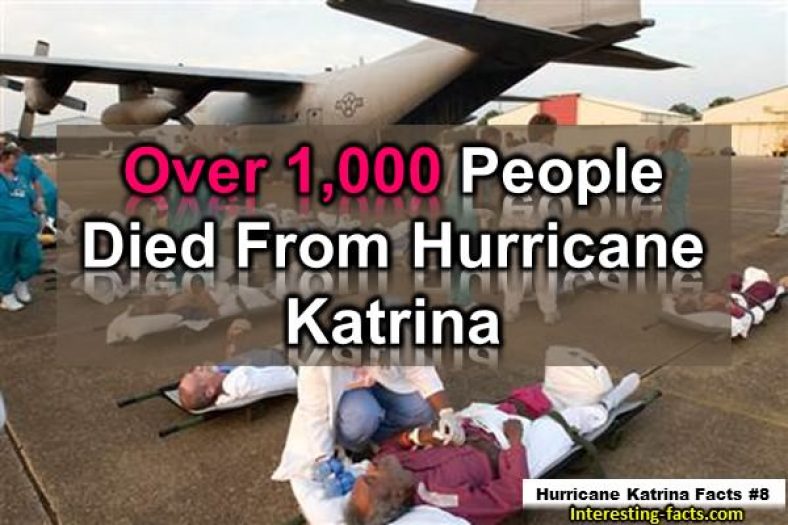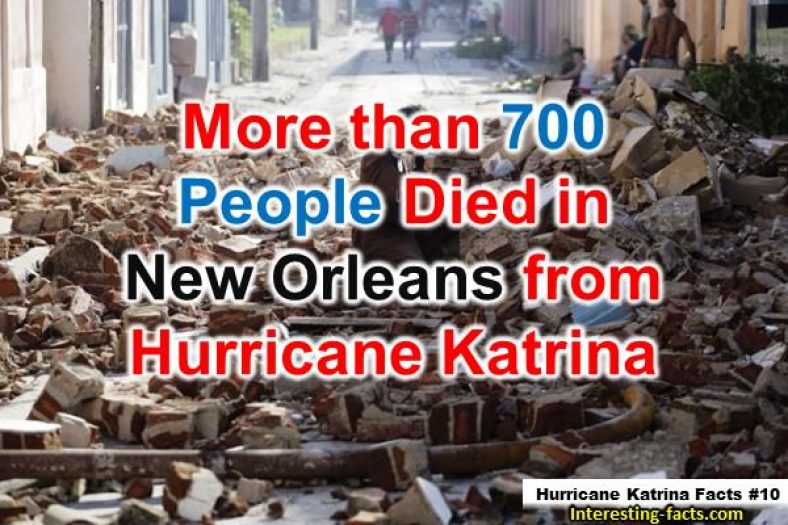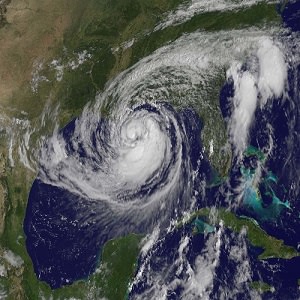Hurricane Katrina Facts – 10 Facts about Hurricane Katrina
Katrina Was the Strongest Hurricane Ever Recorded on the Gulf
The most simple of Hurricane Katrina facts is that by the time Hurricane Katrina made landfall, it had already been measured as the most the powerful hurricane ever on the Gulf Coast. This simple fact goes a long way towards describing the devastation that occurred. Hurricane Katrina had sustained winds of 175 miles per hour, or 280 kilometers per hour!
Katrina developed from a tropical storm into a hurricane and made landfall in late August, 2005. Hurricane Katrina started out as a tropical depression, which is a lower grade tropical storm. The tropical depression that became Hurricane Katrina was born from an earlier tropical depression. This earlier tropical depression was actually dissipating, but was then fed by a band of low pressure moving through the atmosphere.
back to menu ↑Tropical Storm Katrina was Named on August 24, 2005
In 24 hours, from August 23 to August 24, 2005, the tropical depression that would become Hurricane Katrina gained strength and was upgraded to a tropical storm as a result of the band of low pressure that continued feed the storm.
When a tropical depression is upgraded to a tropical storm, it is given an official name. The National Hurricane Center, which is part of the United States National Oceanic and Atmospheric Administration, or NOAA, is responsible for naming storms. On August 24, The National Hurricane Center gave the storm the name Tropical Storm Katrina.
back to menu ↑Katrina Became a Hurricane on August 25, 2005
Within 24 hours of naming Katrina as a tropical storm, NOAA classified the storm as a hurricane. Hurricane Katrina was born on August 25, 2005. The first Hurricane Katrina facts began to emerge, and the storm made landfall shortly after being upgraded to hurricane status.
back to menu ↑Hurricane Katrina Hit Florida Before New Orleans
The first state in the United States that Hurricane Katrina hit was not Louisiana or Mississippi. One of the most surprising Hurricane Katrina facts is that Hurricane Katrina first made landfall in the United States in Florida.
Within hours of being upgraded to hurricane status, Hurricane Katrina crossed over the southern tip of Florida from the Atlantic to the Gulf of Mexico. While crossing over Florida, Hurricane Katrina lost power and was downgraded to a tropical storm.
This could have been the end of Hurricane Katrina facts, which would have been a good thing. When Katrina was born, it was a dying tropical depression brought back to life by the band of low pressure that was in the atmosphere. After crossing Florida, Katrina lost power. However, the storm was fed again, this time by a particularly warm current of water flowing through the Gulf of Mexico.
back to menu ↑Hurricane Katrina Had Sustained Winds Over 175 Miles Per Hour
Nine hours after crossing over Florida, Katrina had reached Category 5 level Hurricane status. The unusually warm water current fed the storm, giving it incredible strength. From August 26 to August 27, the hurricane experts at NOAA watched Hurricane Katrina closely and recorded more Hurricane Katrina facts.
NOAA classified Hurricane Katrina as the third major hurricane of the year on August 27. There was some hope the storm would dissipate in the Gulf. Instead, the storm doubled in size, and by August 28 had reached Category 5 status once more. At this point, the incredible wind speeds and other astonishing Hurricane Katrina facts were recorded.
The minimum central pressure of the storm was over 900 millibars, or over 25 inches of mercury! Measuring the pressure in a hurricane is one way to measure its intensity. The measurements of Hurricane Katrina established another of the Hurricane Katrina facts, and placed the storm among the top 10 strongest Atlantic hurricanes on record.
back to menu ↑Hurricane Katrina Made Landfall in Louisiana on August 29th, 2005
Hurricane Katrina made its second landfall in the United States on August 29, 2005, in the State of Louisiana. Hurricane Katrina was a Category 3 hurricane when it made landfall in Louisiana.
While it was less than a Category 5, Katrina still had winds up to 125 miles per hour, or 200 kilometers per hour! Another of the incredible Hurricane Katrina facts is that there were hurricane force winds over a radius of 120 miles, or 190 kilometers, from the center of the storm. That’s how large Hurricane Katrina was!
Hurricane Katrina facts about the strength of the storm were now starting to be replaced by facts relating to the incredible damage this massive storm was causing to the lives of people on the Gulf Coast.
back to menu ↑Over 1 Million People Were Told to Evacuate for Hurricane Katrina
While the hurricane experts at NOAA were gathering Hurricane Katrina facts, they continued to warn governments in the Gulf Coast of the progress of the storm. When it was clear the storm would make landfall, they recommended governments begin evacuation.
On August 27, President George W. Bush declared a state of emergency for areas that would be affected by the storm. On August 28, as the storm grew in size, people on the Gulf Coast were told to evacuate.
It’s one of the sad Hurricane Katrina facts that state and local governments did not have enough resources to evacuate everyone and handle the displacement of so many people. Over 1 million people were told to evacuate the Gulf Coast.
More sad Hurricane Katrina facts resulted from the lack of preparation. Many people were unable to be evacuated because there were not enough busses to transport them. Hospitals were also unable to evacuate their patients because there were not enough ambulances available.
back to menu ↑Over 1,000 People Died From Hurricane Katrina
The saddest of all Hurricane Katrina facts is that over 1,800 people lost their lives as a result of the storm. Most of these deaths were in Louisiana, where over 1,500 people died because of the storm.
back to menu ↑80% of New Orleans Was Flooded by Hurricane Katrina
The force of Hurricane Katrina’s winds was responsible for a great deal of damage. One of the surprising Hurricane Katrina facts is that much of the damage from the storm was the result of the storm surge.
The storm surge from a storm, particularly a hurricane, is a large coastal wave or flood. The sea level rises with the hurricane and when the hurricane makes landfall, it brings a large volume of water with it.
The storm surge from Hurricane Katrina completely overwhelmed systems that had been built to control coastal flooding. The City of New Orleans flood management system was built by the Army Corps of Engineers, but failed so badly that nearly 80% of the city was flooded.
back to menu ↑More than 700 People Died in New Orleans from Hurricane Katrina
Due to the failure of the flood management system, and the poor preparations for evacuation, some of the worst Hurricane Katrina facts come from the City of New Orleans. New Orleans was devastated by the storm. In parts of the city, up to 80% of all housing was destroyed.
Some of the saddest Hurricane Katrina facts also emerged from New Orleans. More than 700 people died in the city. People also lost their lives in the chaos that followed the storm.
The flooding of New Orleans could have been prevented, and both the city and the State of Louisiana could have been better prepared. During the storm, and in the aftermath of Hurricane Katrina, many ordinary citizens became heroes as they improvised shelter and rescued people. These acts of heroism are some of the few positive Hurricane Katrina facts.
Hurricane Katrina damaged an incredible amount of infrastructure. Airports, roads, power lines and more were destroyed by the storm. The Gulf Coast area and New Orleans would never be the same again. With over 80% property loss in some parts of New Orleans, the city lost a large part of its population. Some people who evacuated could never move back. Based on New Orleans’ lack of protection against flooding in a hurricane, some people who evacuated never would move back.
The support for people affected by Hurricane Katrina has also been one of the most disappointing Hurricane Katrina facts. The federal government in the United States has been accused of not doing enough to help the people who were impacted by Hurricane Katrina. There was mismanagement of the response and relief efforts at all levels of government by the local, state, and federal governments. Officials at the Federal Emergency Management Agency and in the City of New Orleans were removed, or resigned, from their positions as a direct result of their actions during and after Hurricane Katrina.
Facts about Hurricane Katrina Summary
Hurricane Katrina was one of the deadliest natural disasters in living memory. This powerhouse storm caused extensive damage on the Gulf Coast in 2005, killing people, destroying property, and flooding much of New Orleans.
Hurricane Katrina facts tell us about the power of the storm and the devastation it left in its wake. We also learn about some of the failures in the response to Hurricane Katrina, and these provide us with some of the saddest Hurricane Katrina facts.
In some ways, the damage that was done to New Orleans by Hurricane Katrina was an accident waiting to happen. One of the most surprising Hurricane Katrina facts to emerge after the storm is that the Army Corps of Engineers was responsible for the dramatic failure of the New Orleans flood system.
These Hurricane Katrina facts will leave you in awe of the power of nature, and saddened by the incredible destruction that occurred. Although many of us saw images on television, the true scale of the damage becomes more apparent when we review Hurricane Katrina facts.
Hurricane Katrina changed many people’s lives forever. These Hurricane Katrina facts tell the story of a huge storm that impacted the lives of many people. The impact from Hurricane Katrina continues to be felt today.

